7 Gorgeous Medieval Villages in France
Some villages in France haven’t changed much in hundreds of years, and that’s exactly what makes them worth the trip. Narrow streets, weathered stone, faded signs, and hilltop views that haven’t moved since the 13th century.
These five medieval spots still feel grounded in their past, each with its own story and setting.
1. Rocamadour, Occitanie

Rocamadour looks like it’s clinging to a limestone cliff in southwest France. Since the 12th century, it’s been a legendary stop for pilgrims drawn to the Chapel of Notre Dame, which houses the Black Madonna.
You reach the chapel by climbing the Grand Escalier, a 216-step staircase that medieval pilgrims once ascended on their knees. Along the way are seven chapels with unique frescoes and stone carvings.
At the top, the château gives sweeping views of the Lot Valley, and you can still walk along the fortified walls.
The local goat cheese has AOP status and is a regional staple. And in autumn, the Montgolfiades festival fills the sky with hot air balloons that float above the cliffs.
If you want a place that truly feels epic, clinging to a cliff, echoing with centuries of pilgrim footsteps, this is it. The views, history, and atmosphere are unlike anywhere else in France.
2. Saint-Cirq-Lapopie, Lot
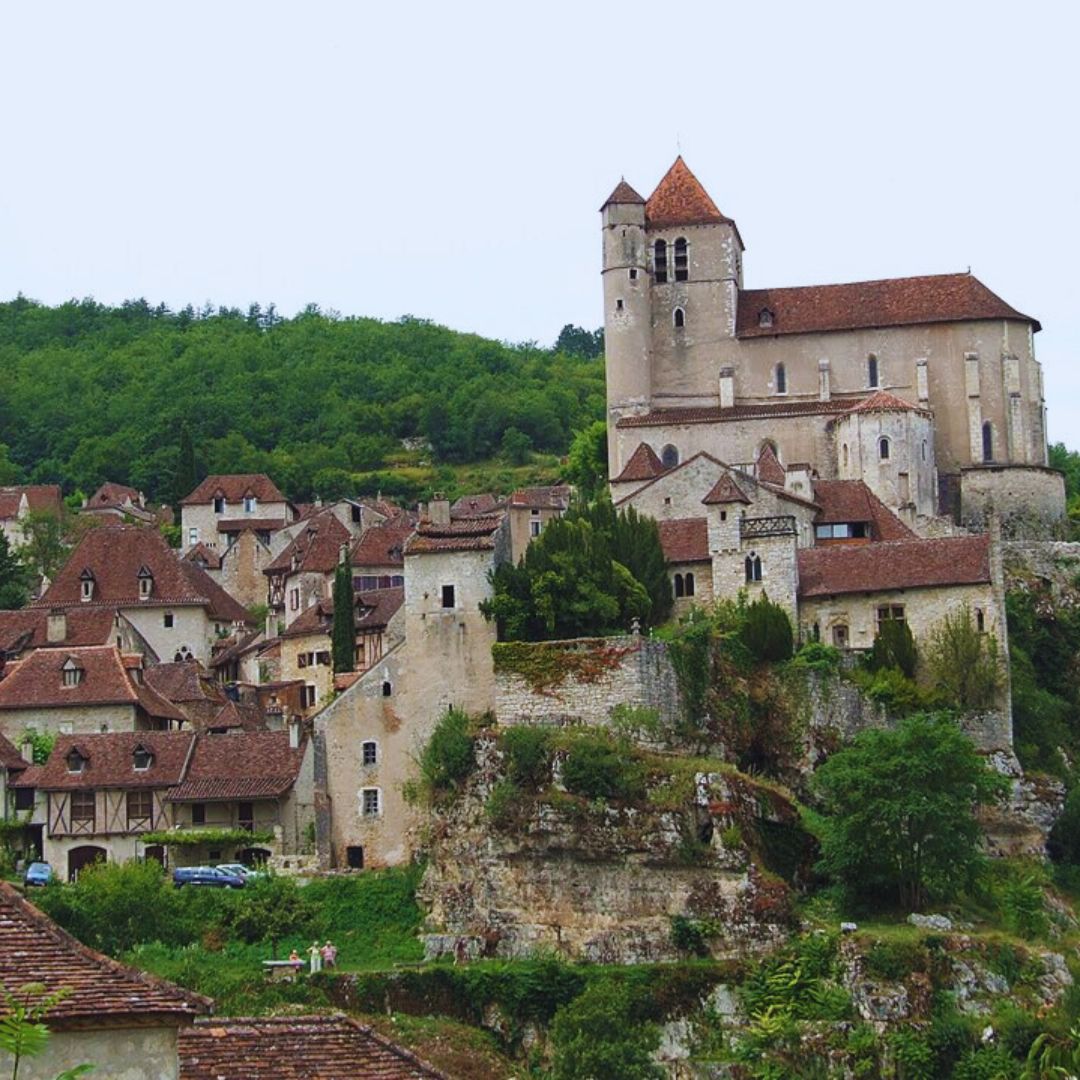
This village hangs high above the Lot River, with ivy-covered stone houses and narrow alleys curving along the edge of a cliff. Saint-Cirq-Lapopie is one of those rare places where everything still looks handmade.
In medieval times, it was a hub for woodturners who crafted furniture and housewares. In the 1950s, surrealist writer André Breton called it a “miracle” and settled here. His presence helped draw a small community of artists that remains active today.
Now it’s filled with galleries, workshops, and a few restaurants serving dishes made with local ingredients from the valley below.
This is the kind of village where you’ll want to wander without a plan. It’s quiet, beautiful, and full of details you’ll remember long after the trip.
3. Gordes, Vaucluse
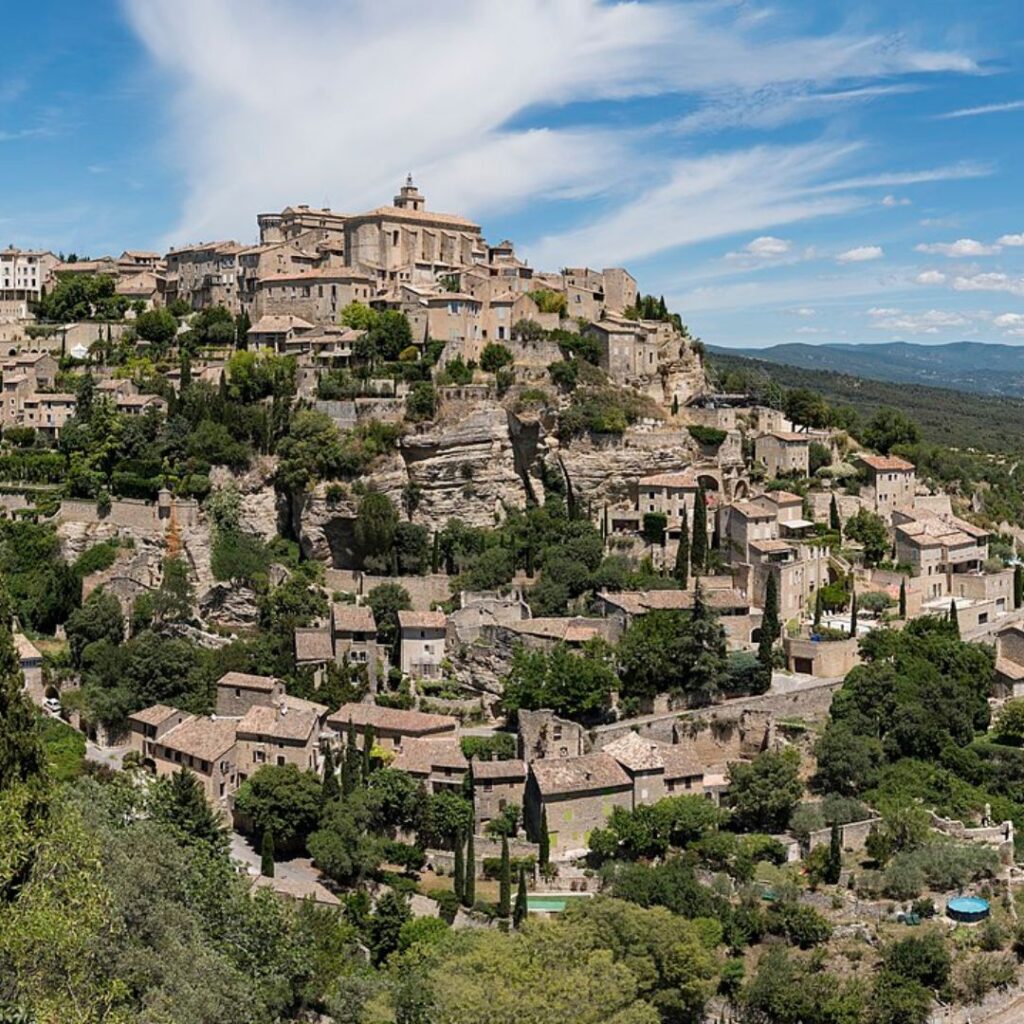
Gordes rises from the Luberon Valley like a fortress. Its pale limestone buildings reflect the soft colors of Provence, and every corner looks carefully shaped by hand.
A 12th-century château dominates the center of the village. Once a defensive stronghold, it now hosts rotating art exhibits. Just outside the village, the Village des Bories showcases ancient huts built entirely from dry stone, a technique that dates back centuries.
Gordes has long appealed to artists like Marc Chagall, who came for the light and stayed for the views. Markets here are lively, and hiking trails crisscross the surrounding hills.
Come for the views, stay for the way light hits the stone at sunset. Gordes has that mix of raw beauty and Provençal soul that photographers and hikers both love.
4. Eguisheim, Haut-Rhin
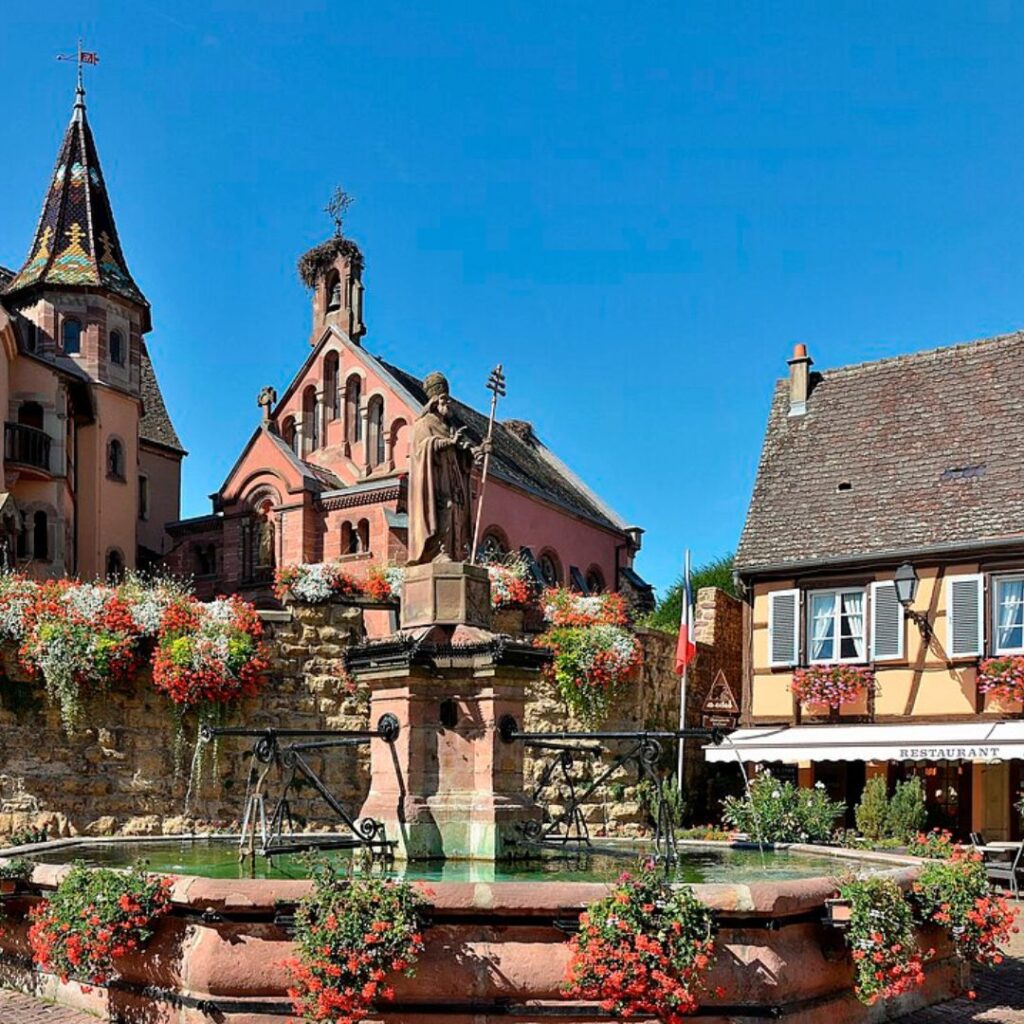
Eguisheim is one of the most distinctive-looking villages in Alsace. Its circular layout wraps around a central square, with cobbled lanes lined by half-timbered houses in pastel shades and overflowing flower boxes.
It’s the birthplace of Pope Leo IX, and the Saint-Leon fountain sits at the village’s heart. Surrounding the town are vineyards known for excellent Riesling and Gewürztraminer. Many winemakers offer tastings in their cellars.
Each summer, the Fête des Vignerons takes over the streets with traditional music, parades, and plenty of food.
If you’re into wine, color, and tiny fairytale streets, Eguisheim is the place. Its layout is unique, the houses are picture-worthy, and you can taste some of the region’s best wines.
5. Conques, Aveyron

Conques sits quietly in the forested hills of Aveyron, its stone houses and slate roofs arranged along cobbled paths. But the real centerpiece is the Abbey Church of Sainte-Foy.
This Romanesque church is one of the most important stops on the Camino de Santiago. Inside, it holds the gold-and-gem-encrusted reliquary of Sainte-Foy and a massive tympanum carving of the Last Judgment – over 100 figures etched in stone.
The village still has artisans making leather goods and pottery by hand. And in the summer, the abbey hosts classical music concerts that echo through the nave.
It’s worth the detour for the abbey alone, one of the most important Romanesque churches in France. Add to this the medieval streets, real artisan workshops, and the Camino de Santiago atmosphere.
Sarlat-la-Canéda (Dordogne)
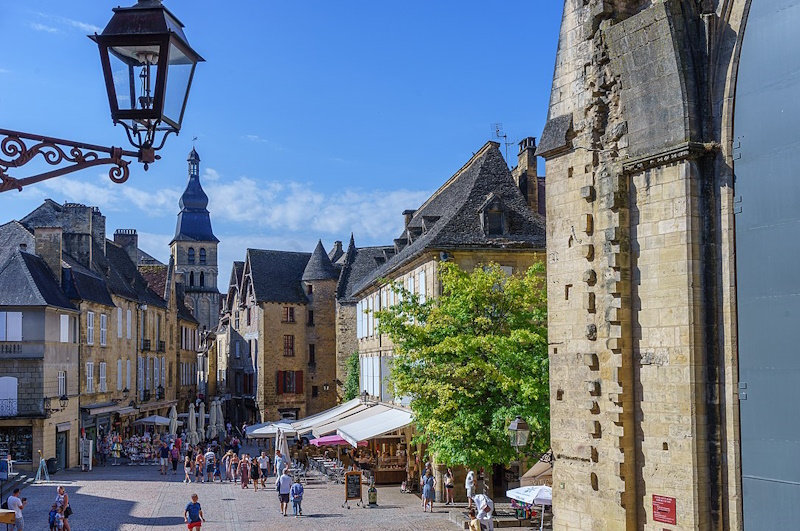
Sarlat is one of the best-preserved medieval towns in France, with golden limestone buildings packed tightly into a maze of lanes, courtyards, and market squares.
It grew around a Benedictine abbey and flourished in the 14th and 15th centuries, leaving behind a dense cluster of Gothic and Renaissance mansions that still shape the old town today.
It’s also a major food destination, famous for its foie gras, truffles, and walnut-based specialties. The Saturday market spills through the streets and is one of the liveliest in the region.
In summer, street performers and evening festivals fill the town with music and theater.
Sarlat is easy to explore on foot and has one of the best-preserved medieval centers in France. The weekly markets are excellent for local food, and the town makes a good base for visiting the Dordogne’s castles, caves, and river villages.
Mont-Saint-Michel (Normandy)
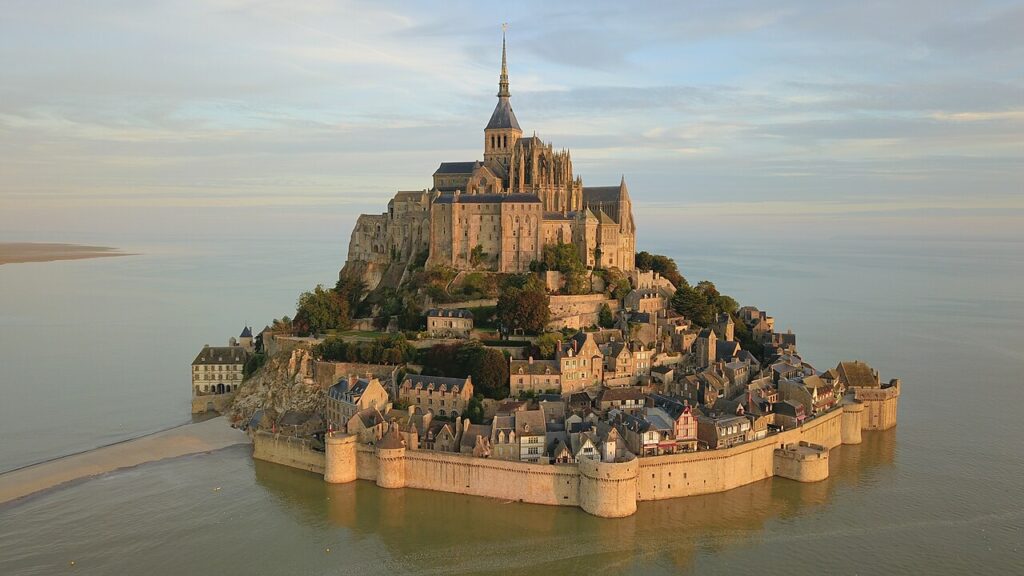
Rising out of the tidal flats off the Normandy coast, Mont-Saint-Michel is a fortified island village built around a dramatic medieval abbey. Its narrow streets spiral up toward the abbey church, with shops, homes, and old stone walls packed tightly on the slope.
First settled in the 8th century, it became one of the most important pilgrimage sites in medieval Europe.
The tides here are extreme and change fast, sometimes cutting the island off completely. Walking across the bay with a licensed guide is one of the most striking ways to experience it.
The abbey itself is layered with Romanesque and Gothic details, and the views from the top stretch for miles across sea and sand.
Mont-Saint-Michel is one of France’s most iconic sights, and for good reason. Go early or late to avoid crowds, and consider staying overnight to see it lit up after dark.
